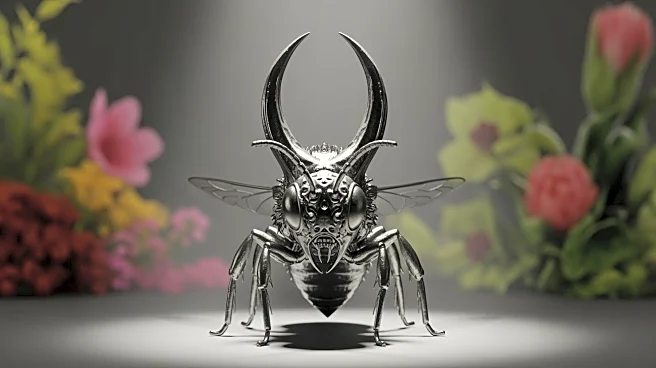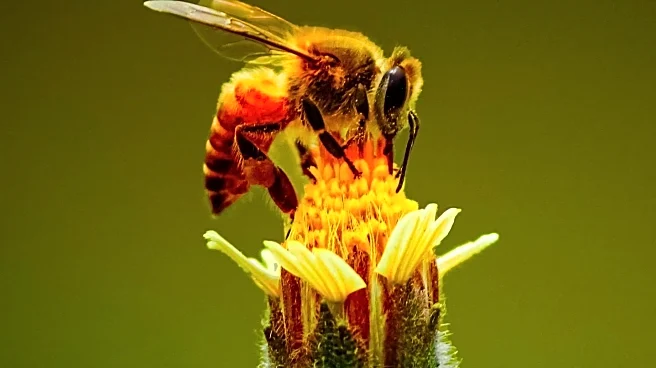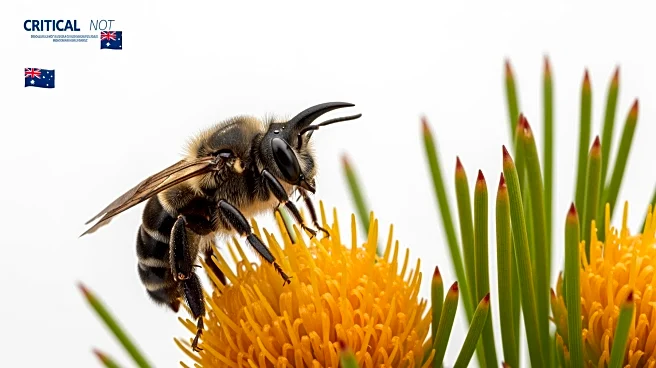What's Happening?
Researchers in Australia have identified a new bee species, Megachile lucifer, characterized by its distinctive devil-like horns. Discovered in Western Australia, the species is the first new member of
its group described in over 20 years. The horns may aid in accessing flowers and defending nests, though their exact function is unclear. The discovery highlights the need for further study of native bees, which face threats from habitat disturbance and climate change.
Why It's Important?
The discovery of Megachile lucifer underscores the importance of biodiversity and the need for conservation efforts. Native bees play a crucial role in pollination, impacting agriculture and ecosystems. The identification of new species can inform conservation strategies and highlight the risks posed by environmental changes. Protecting native bees is essential for maintaining ecological balance and supporting food production.
What's Next?
Researchers may conduct further studies to understand the ecological role of Megachile lucifer and its interactions with native plants. Conservationists could advocate for stronger policies to protect bee habitats from threats like habitat loss and megafires. Public awareness campaigns might encourage Australians to appreciate and protect native bee species, fostering a culture of environmental stewardship.
Beyond the Headlines
The discovery of the 'Lucifer' bee raises questions about the impact of climate change on biodiversity. As habitats shift, the survival of native species becomes increasingly precarious. The study of bees can provide insights into broader environmental changes and the resilience of ecosystems. This discovery may also inspire interest in entomology and the exploration of lesser-known species.











